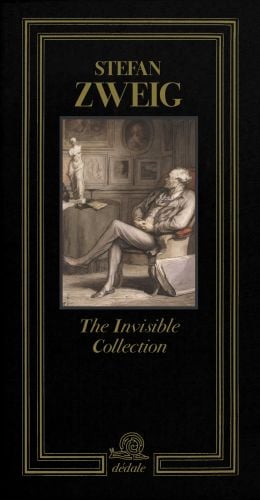Full Description
First published in 1925, Austrian writer Stefan Zweig’s short story The Invisible Collection still manages to strike the reader with its ability to masterfully sketch the contours of collecting obsession. Deeply fascinated by the innovations that enriched European thought in the 1920s, first and foremost psychoanalysis, which also echoes among these pages, Zweig constructs a story that, despite being deeply anchored in time and space, is still relevant and full of humanity.
In addition to the engravings by Dürer and Rembrandt mentioned in the story, this second book in the Dédale series is illustrated by the paintings that the French painter Honoré Daumier. It is opened by a preface by Brazilian writer Pedro Corrêa do Lago, who shares with Zweig a collecting passion for letters and autograph manuscripts by well-known authors, which is followed by an introduction by Guillaume Glorieux, who focuses on the relationship between collection and wealth, as well as the importance of collecting and the joy of sharing.
About the Author
Stefan Zweig was born in Vienna in 1881. After obtaining a degree in philosophy, he had the opportunity to travel extensively and live in a number of European cities. These experiences made him a cosmopolitan soul with a great interest in the wealth of innovations in European thought and culture. First and foremost among these was psychoanalysis, whose echoes are frequently found in his literary works. He debuted in his early twenties with a collection of poems. After that, his body of work developed in several directions, as if to reflect his universalist and humanist leanings: he wrote plays, novels and short stories, biographies, poems, many of them successful, including Amok, Decisive Moments in History and The Royal Game. Because of his anti-nationalist stances and Jewish origins, his life in Austria at the rise of Nazism became difficult: in 1933 his books were put on the list of those to be burned. The following year, he was subjected to a raid that compelled him to emigrate first to London, then, in 1940, to New York and finally, Brazil. On 23 February 1942, in the city of Petrópolis, disheartened by the vision of the destruction of the world and the ideals in which he believed, and plagued by fits of depression, he took his own life along with his second wife.
Pedro Corrêa do Lago is a Brazilian publisher, writer, historian, collector and curator. He has amassed what is considered to be the largest private collection of autograph letters and manuscripts in the world. His research in the field of art history focuses on unknown or little known works related to Brazil. He is the author of more than twenty books on Brazilian art and culture and on manuscripts. He has curatedmajor exhibitions in Brazil and abroad. In 2002, together with his wife Bia Corrêa do Lago, he founded the publishing house Capivara, which specializes in Brazilian art. He was president of the Fundação Biblioteca Nacional from March 2003 to October 2005, when he founded the publication Revista de História da Biblioteca Nacional.
Guillaume Glorieux is a university Professor and Director of Education and Research at the L’ÉCOLE, School of Jewelry Arts in Paris. As an Art Historian, he has dedicated part of his research to the history of the art market and collecting in the ancient world in relation to the history of taste. In 2002, he has published an important study on eighteenth-century Parisian collector Edme-François Gersaint, À l’enseigne de Gersaint. Edme-François Gersaint, marchand d’art sur le pont Notre-Dame (1694–1750) (Champ Vallon, 2002), which was awarded by the Académie Française. His most recent publications have been about the history and craftsmanship of jewelry, including Preconceived Notions on Jewelry (L’ÉCOLE, School of Jewelry Arts / Le Cavalier bleu, 2024), curated by him. 86
